Abstract
An attempt is made to explain along Darwinian lines the steps by which the treponematoses evolved and how they came to have their present distributions and characteristics. The original ancestors of the treponemes would have been free-living organisms, but various forms of symbiosis with larger creatures would in time lead to the development of parasitism with varying degrees of pathogenicity. Modern man may have acquired his treponemes from his ungeneralized primate ancestors and taken them with him on his migrations over the world. Isolation of man in different continents, especially after the end of the Ice Age, would lead to speciation in both man and his parasites; this would account for the features of pinta in Central America. Ecological isolations would produce syphilis and yaws, the latter being successful in warm areas where no clothes were worn or overcrowding was gross, and syphilis being successful in colder climates but not in endemic yaws areas where so many people were immune by puberty.
A syphilis organism has little chance of survival if it fails to infect the genitalia. This is perhaps the reason for congenital infections in that disease. The organotropic properties of syphilis treponemes may be the results of repeated passage through the foetus; the conditions for survival in the foetus are much different from those in the mother, so that organotropic rather than genitotropic strains would be selected.
Full text
PDF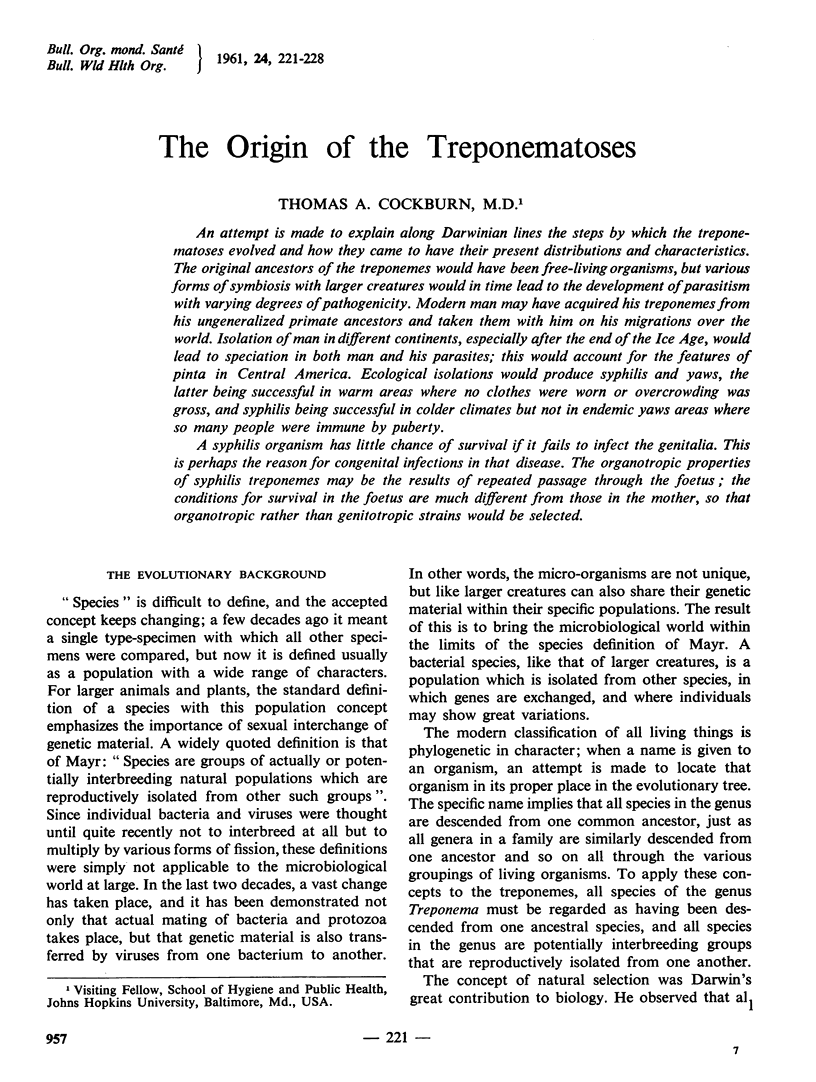
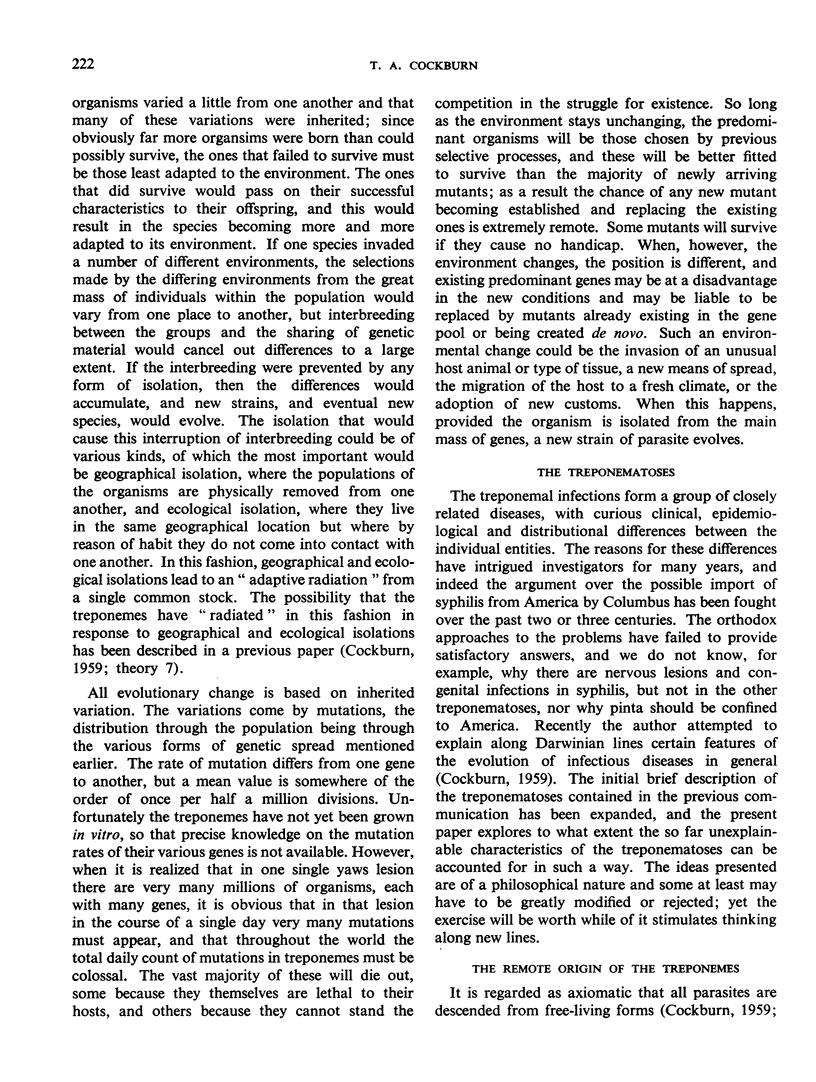
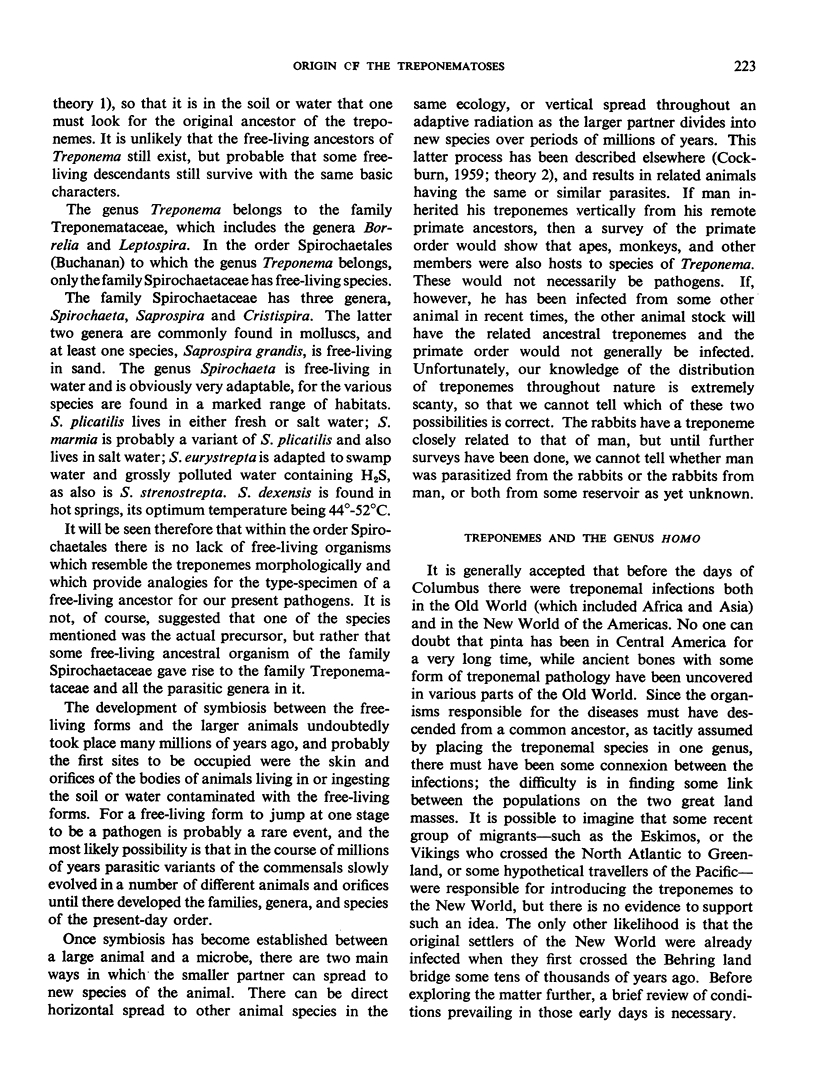
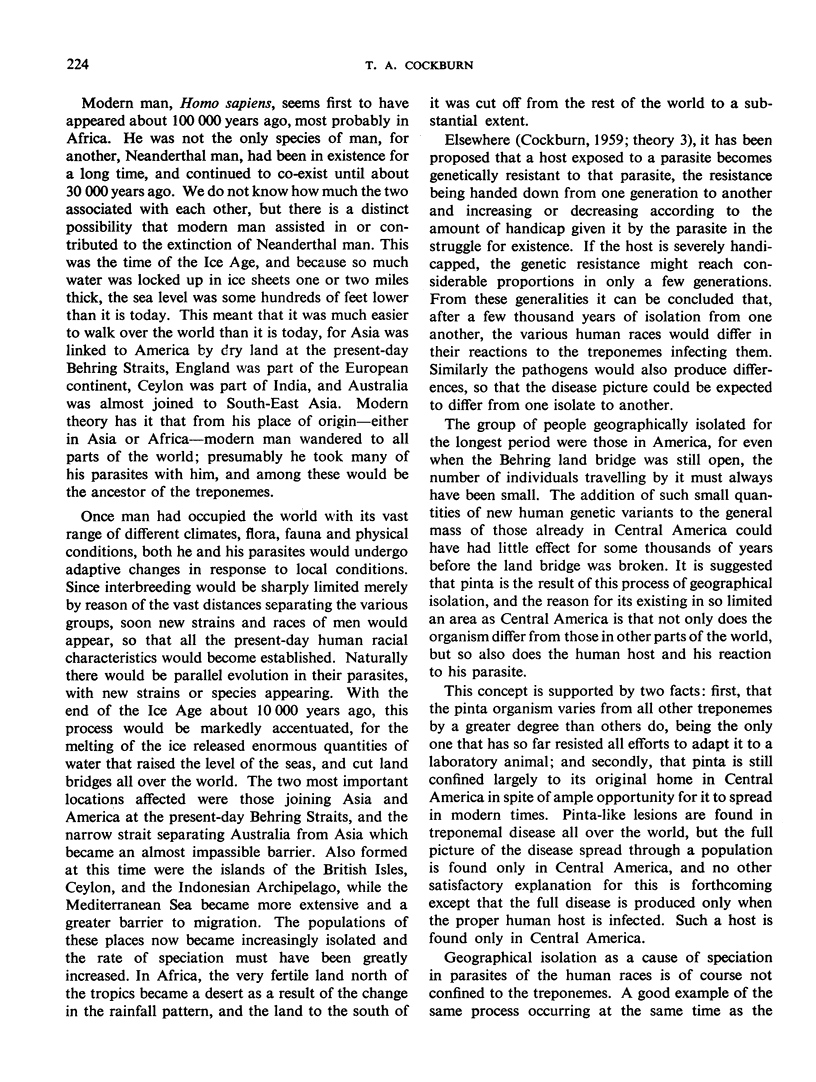
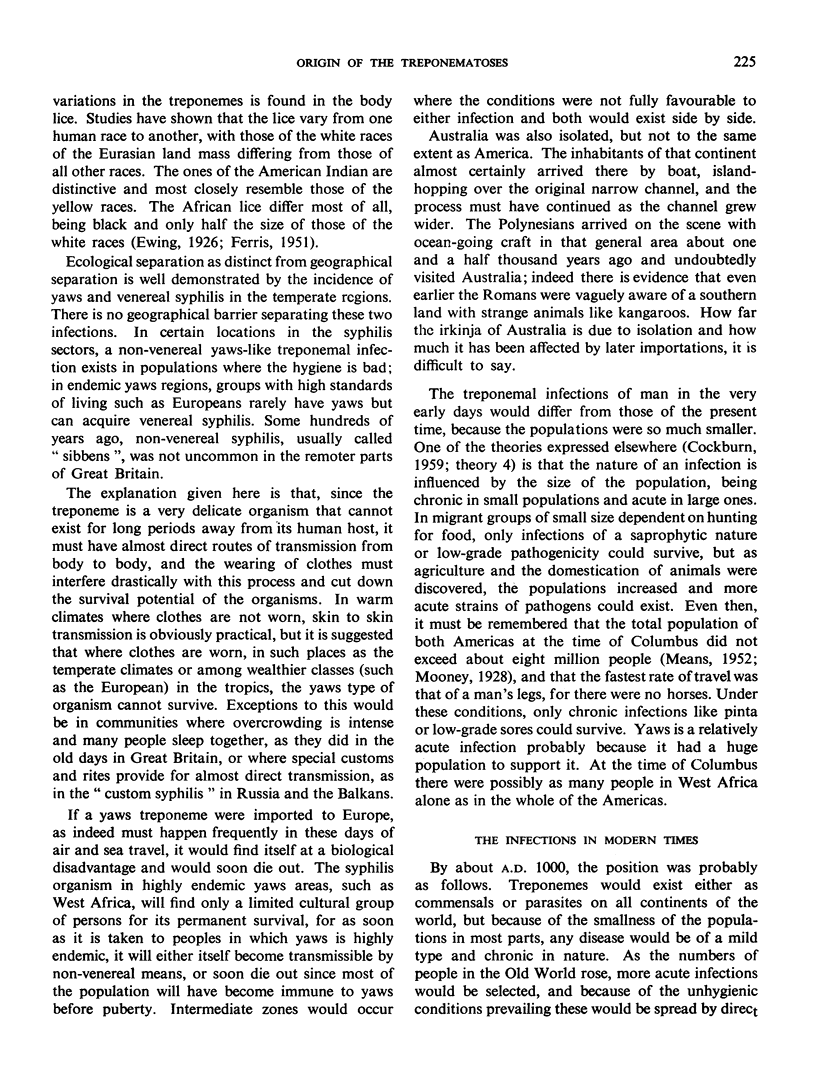
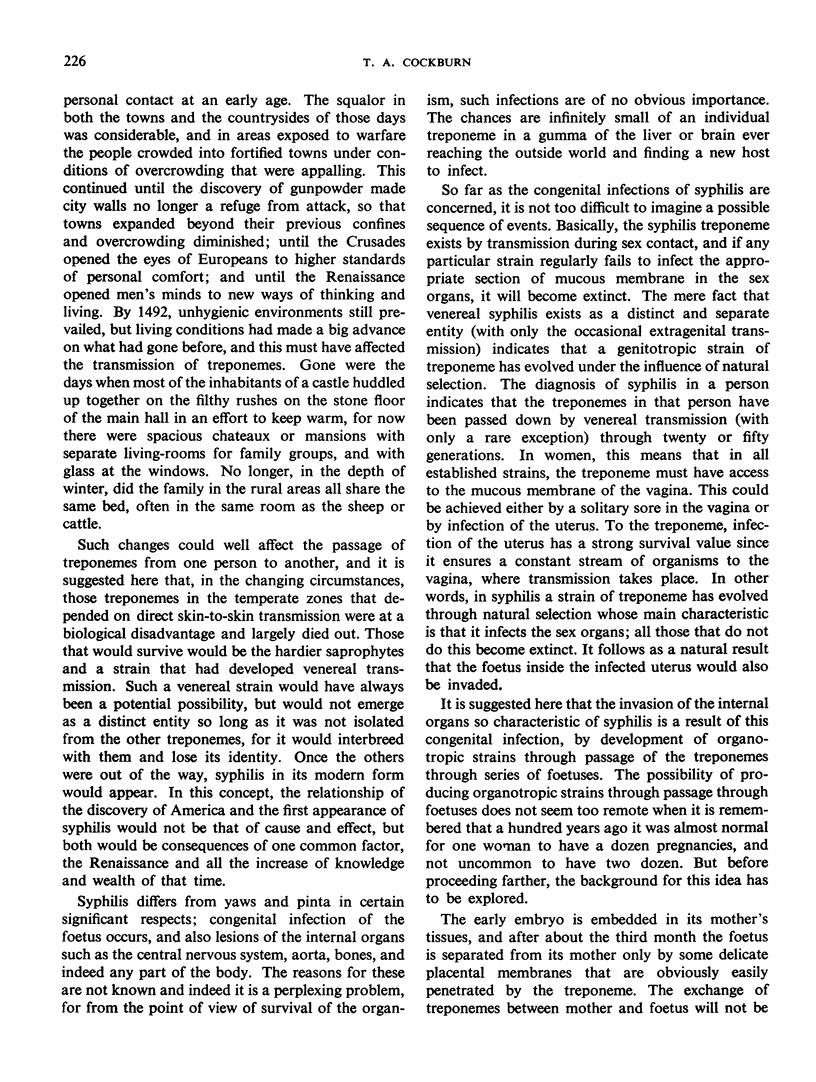
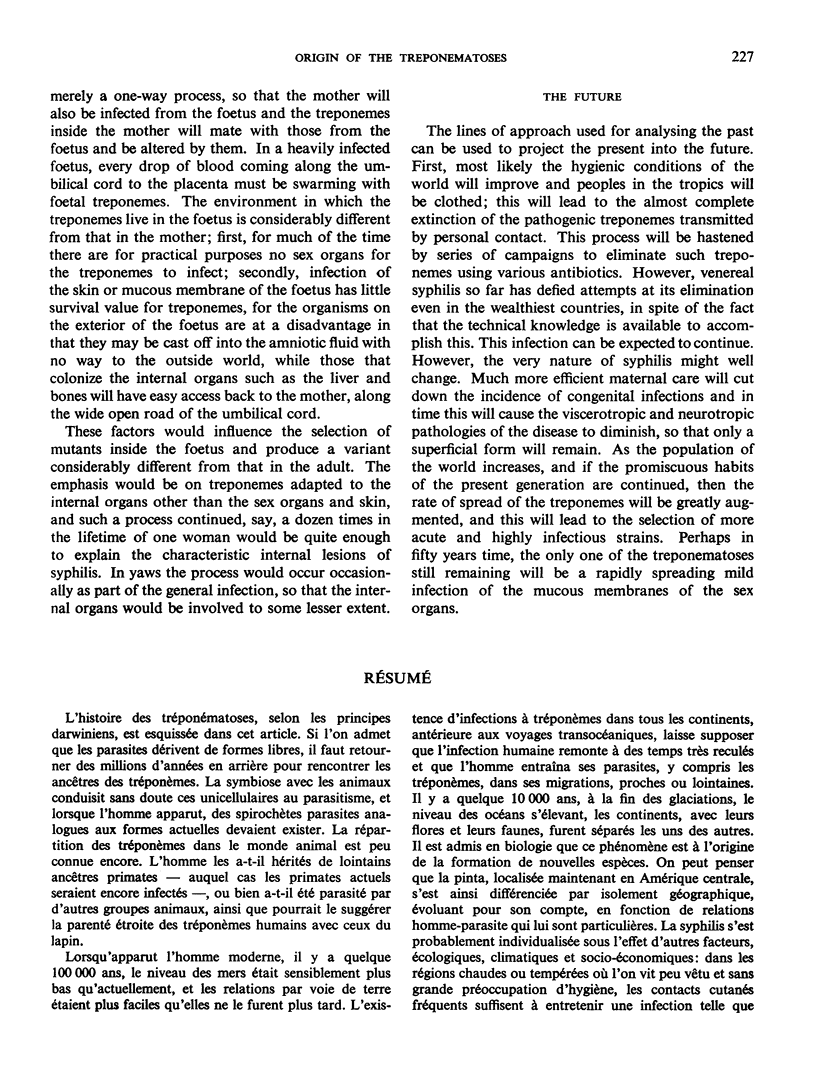
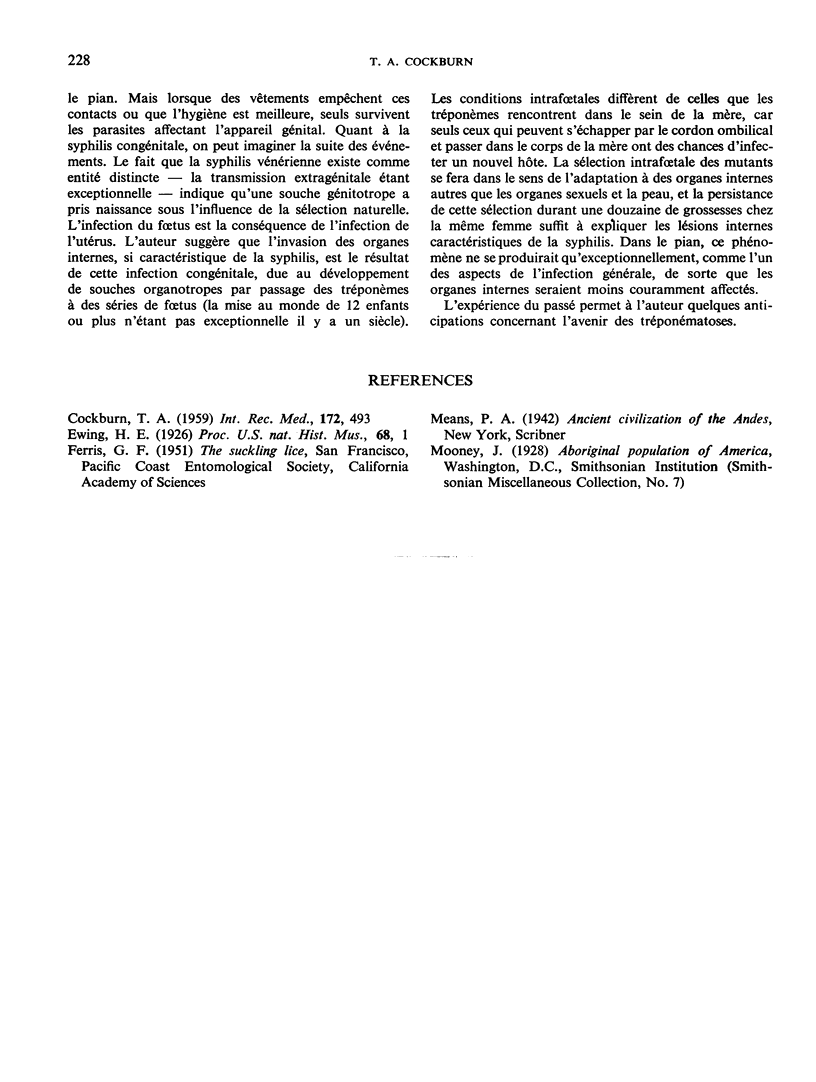
Selected References
These references are in PubMed. This may not be the complete list of references from this article.
- COCKBURN T. A. The evolution of infectious diseases. Int Rec Med. 1959 Sep;172:493–508. [PubMed] [Google Scholar]


